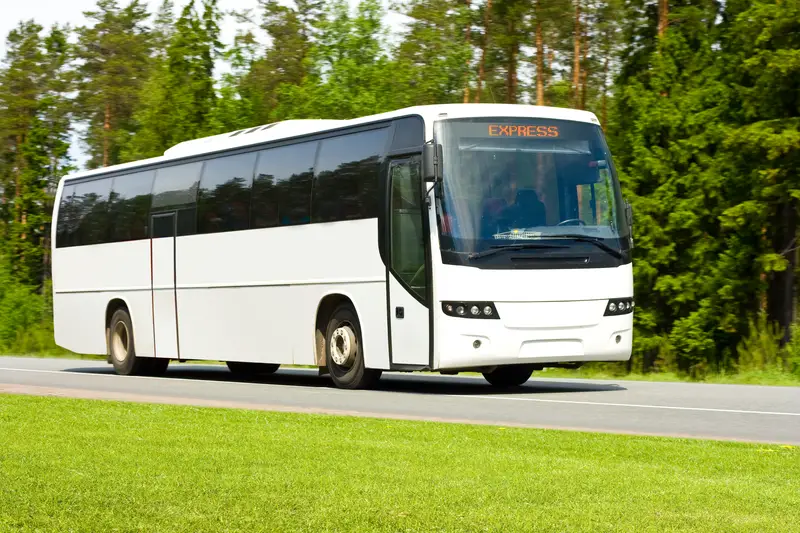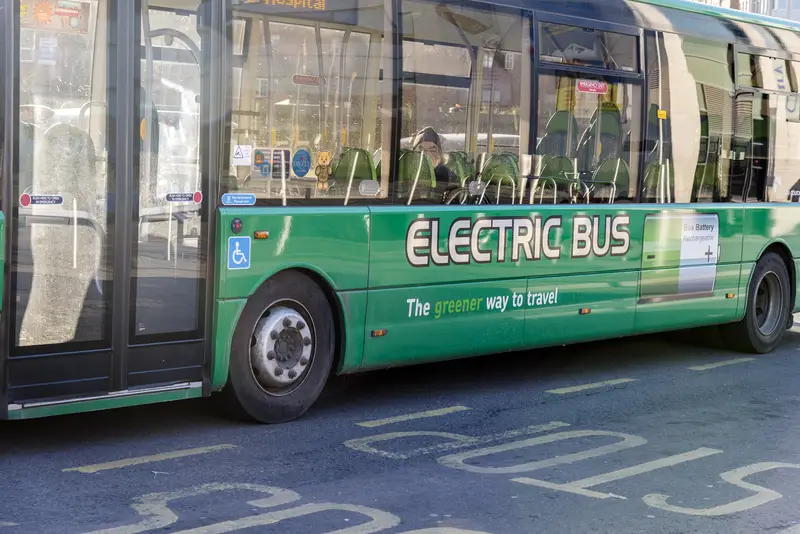
Most school buses around the US are powered by diesel engines. Buses use diesel engines as they are durable, more energy efficient, and reliable. In addition, they have impressive range, operational flexibility, and a lot of horsepower.
These engines are also very cost-effective to maintain and can use renewable fuels such as biodiesel which helps reduce carbon emissions. But, how much horsepower does a bus have?
The first buses developed could deliver up to 40 horsepower. However, most modern diesel-powered buses in the US today have an average horsepower of between 220 and 450 horsepower, with the exception of some newer electrically powered buses being able to output up to 550 horsepower.
Horsepower is an essential factor to consider when deciding what engines to use in buses because it is a direct measurement of how much force the engine produces every second.
The force that an engine can output allows a bus to accelerate. Therefore, the more horsepower a bus has, the faster it can accelerate.
The Horsepower Of Buses Over Time
Horsepower in buses has increased substantially over time due to the development and improvement of new technologies.
As a result, the horsepower of most modern buses is between 5 and 10 times more than that of buses that were first developed.
How Much Horsepower Did The First Buses Have?
The first buses developed in the early 20th century were created to transport a larger group of people than street cars while providing a more flexible route for them to travel.
These first buses were developed as an alternative to carts driven or “powered” by horses, hence where the name “horsepower” originates.
The very first “bus” was developed in 1830 and was powered by means of a steam engine used to move a large stagecoach. Much later, in 1895, the first omnibus, which could carry up to 8 passengers, was developed in Germany, driven by a single-cylinder, 4-horsepower engine.
In the 1900s, the first 20-seater bus was developed, driven by a gasoline engine capable of delivering up to 40 horsepower with speeds of up to 20 miles per hour.
Then, in the late 1930s, the first two-stroke diesel engine was developed and fitted at the rear end of buses, which is the same initial design from which buses are built today.
How Much Horsepower Do Modern Buses Have?
Most modern buses are driven by two-stroke V-8 engines, which can deliver up to 400 horsepower.
These engines are far more potent than the first designs of buses, which were only capable of delivering up to 40 horsepower, showing the advancement in technology over the years.
Although these two-stroke V-8 engines have been the norm for many years, with the technology used in them becoming slightly more advanced over time, the negative environmental impact that the carbon emissions of these have has pushed people to develop new technologies which are more environmentally friendly.
New technologies now allow buses to be powered electrically, which not only has less of an environmental impact but is also capable of producing much more horsepower than mechanical engines.
How Much Horsepower Do Electric Buses Have?

Buses fitted with electric engines are a relatively new and still scarce development. However, electric buses have much more horsepower than buses fitted with regular diesel and petrol engines.
This is because the technology used in developing electric buses is very advanced, making it easier to get more power output from these designs.
Most electric buses can produce up to 550 horsepower, making them significantly more powerful than buses with mechanical engines. However, the extra horsepower does come with quite a hefty additional cost.
Although electric buses do not need to be maintained as regularly as buses with mechanical engines, the initial cost and replacement cost of parts for electric buses can far outweigh the maintenance costs on regular buses.
The technology used in the development of these buses is still new and has yet to be widely available, which means they are currently not the most viable option to be used for everyday transportation.
However, they are the most environmentally friendly option as they have far fewer carbon emissions than regular mechanically powered buses.
Why Does Horsepower Matter For Buses?
Horsepower plays a vital role in how the engine of a bus operates. This is because horsepower directly affects the rate at which a bus can accelerate, therefore making it an indication of the amount of work needed for a bus to carry its load.
The more horsepower a bus has, the easier it will be to draw its load. If a bus has more horsepower, it will be easier to start moving from a standstill as it requires less work and less force to start moving, as opposed to a bus with lower horsepower.
How Much Horsepower Does A Bus Need?
The amount of horsepower output required for a bus to function effectively is determined by the weight of the bus, the load it needs to carry, and how fast the bus needs to travel.
This is because the bus needs to have enough power to move itself and the load it needs to transport without putting too much strain on the engine. The top speed of a modern bus is between 55MPH and 100MPH, and while they rarely need to go that fast, they still need a certain amount of horsepower to drive smoothly.
If the engine has less horsepower than what is necessary to drive around with its load, it may still be able to get the job done.
However, the bus’s engine would be overworked, meaning that the engine’s components will wear out much faster and need to be maintained much more regularly, which leads to extra maintenance costs and a significantly shorter life for the engine.
Suppose the bus engine has more horsepower than necessary to drive around with its load effectively. In that case, the engine will be underworked, so there will be no strain on the engine, and it will be able to drive around easily.
However, having more horsepower than necessary isn’t always a good thing because it may cost more to maintain, as replacement parts may be more costly.
Therefore, a bus should be fitted with an engine with an adequate amount of horsepower to drive around with the load it needs to carry at the appropriate speed.
Conversely, having less horsepower can have a detrimental effect on the reliability, cost-effectiveness, durability, and performance of the bus, which will impact the overall effectiveness of the bus.
Conclusion
The technology used in bus engines over the years has constantly been developing. Some of the first bus engines designed were only capable of delivering up to 40 horsepower, which may have seemed a lot at the time; however, it is nothing compared to the bus engines used today.
Most modern buses use a two-stroke V-8 engine capable of delivering anywhere between 220 and 450 horsepower, with electrically powered buses being able to deliver up to 550 horsepower.
